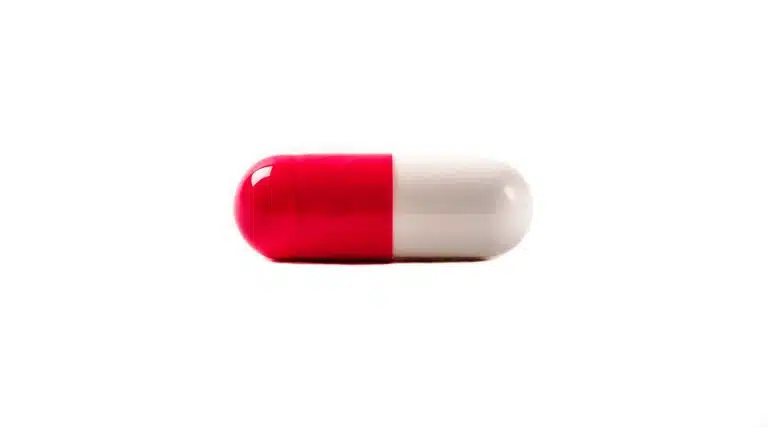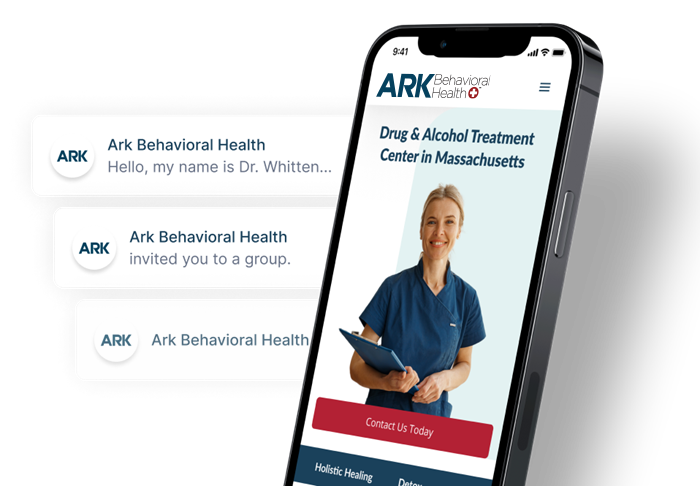Vyvanse Abuse & Addiction: Side Effects, Withdrawal, & Treatment Options
- What Is Vyvanse?
- Vyvanse Vs. Adderall Or Ritalin
- Side Effects Of Vyvanse
- Vyvanse Abuse
- Vyvanse Addiction
- Treatment For Vyvanse Abuse & Addiction
- FAQ

Many health care providers prescribe Vyvanse to treat attention deficit hyperactivity disorder (ADHD) and binge eating disorder. When taken as prescribed, the medication can work well.
Unfortunately, some people abuse Vyvanse by taking it in a manner not prescribed. If you or a loved one struggles with Vyvanse abuse, recovery is possible at a substance abuse treatment center.
What Is Vyvanse?
Vyvanse is the brand name for a central nervous system (CNS) stimulant called lisdexamfetamine dimesylate. When you take it, your body converts it to another CNS stimulant called dextroamphetamine.
The medication increases your brain’s level of dopamine and norepinephrine. These neurotransmitters (brain chemicals) regulate your attention, alertness, and ability to focus.
If you have ADHD, Vyvanse can help you concentrate and control impulsive behaviors. If you have binge eating disorder, the drug can help you stop or reduce binging (eating a large amount of food at once and feeling unable to stop).
How Is Vyvanse Different From Adderall Or Ritalin?
Many people compare Vyvanse to Adderall and Ritalin. All three of these prescription drugs are popular ADHD medications that enhance dopamine and norepinephrine.
However, they have different formulations:
- Vyvanse consists of a CNS stimulant called lisdexamfetamine dimesylate, which gets converted to another CNS stimulant called dextroamphetamine
- Adderall consists of dextroamphetamine and another CNS stimulant called amphetamine
- Ritalin consists of a CNS stimulant called methylphenidate
In addition, only Vyvanse is approved to treat binge eating disorder. Also, unlike Adderall and Ritalin, Vyvanse is not approved to treat narcolepsy (a sleep disorder that causes frequent drowsiness).
Side Effects Of Vyvanse
When you take Vyvanse, you may experience side effects such as:
- increased heart rate
- increased blood pressure
- dry mouth
- irritability
- anxiety
- mood swings
- dizziness
- trouble sleeping
- reduced appetite
- weight loss
- constipation or diarrhea
- nausea or vomiting
Vyvanse can also increase your risk of heart attack, stroke, or sudden death (especially if you have cardiovascular disease or other heart problems).
Vyvanse Abuse
The United States Food and Drug Administration (FDA) has classified Vyvanse as a Schedule II controlled substance. That means it has a high potential for abuse and addiction.
Vyvanse abuse occurs when you take the drug without following a doctor’s instructions. For example, you may:
- take it without a prescription
- take it more frequently than you were prescribed
- take it at higher doses than you were prescribed
- take it for a longer period than you were prescribed
- take it with alcohol or other drugs
- take it a manner not prescribed (such as snorting or injecting it)
Because Vyvanse can increase attention span and energy, many people abuse it to enhance their performance at school or work (that’s why it’s often called a “study drug).
In addition, some people abuse Vyvanse to lose weight, as the drug can suppress one’s appetite. Others abuse it to feel euphoric or “high.”
Signs Of Vyvanse Addiction
If you abuse Vyvanse or you’ve been taking it as prescribed for a long time, you may become addicted to it. Addicted individuals find it incredibly difficult to stop using the drug.
A person who’s abusing or addicted to Vyvanse may:
- need higher and higher doses of the drug over time to achieve the desired effects
- have trouble sleeping
- talk more quickly than usual
- seem hostile or aggressive
- experience mood swings
- sweat excessively
- hallucinate (see, hear, or feel things that aren’t there)
- withdraw from family and friends to spend more time getting and using the drug
- fall behind at work or school to spend more time getting and using the drug
- feel unable to stop using the drug despite wanting to
Vyvanse Withdrawal Symptoms
When you’re addicted to Vyvanse, you usually develop a physical dependence. This means your body needs the drug to function normally.
If you try to stop taking it, you may experience withdrawal symptoms like:
- irritability
- anxiety
- depression
- shaking
- sweating
- trouble sleeping
Whether you were prescribed Vyvanse or not, talk to a doctor before you try to stop taking it. They’ll help you avoid or reduce withdrawal symptoms by gradually reducing your dosage.
Learn more about Vyvanse Withdrawal
Vyvanse Overdose
Individuals who struggle with Vyvanse abuse or addiction face the risk of overdose. Overdose can occur when you take a higher dose than you were prescribed.
Signs of Vyvanse overdose include:
- confusion
- aggression
- hallucinations
- panic attacks
- intense shaking
- nausea or vomiting
- diarrhea
- high or low blood pressure
- hyperthermia (dangerously high body temperature)
- irregular heartbeat
- seizures
- coma
Call for emergency services right away if you or someone you know experiences these symptoms; a Vyvanse overdose can be life-threatening.
Learn more about Vyvanse Overdose
Treatment Options For Vyvanse Abuse & Addiction
Most people find it impossible to recover from Vyvanse abuse or addiction on their own. If you or someone you love is struggling with the medication, turn to an addiction treatment center.
Inpatient & Outpatient Treatment
These centers offer both inpatient and outpatient care. Inpatient care is best if you have a severe addiction and need 24/7 monitoring. Outpatient care may work if you have a mild-to-moderate addiction and a strong support system at home.
Whether you choose inpatient or outpatient care, a team of medical professionals will help you gradually reduce your Vyvanse dosage to decrease withdrawal symptoms.
In addition, most centers provide various services to aid recovery and prevent relapse, such as:
- individual therapy, in which a licensed counselor will help you manage mental health concerns like depression or anxiety and develop healthy coping skills
- group therapy, in which you can connect with people who are facing similar challenges and share coping tips
- holistic care practices that teach healthy activities like yoga and exercise
To learn more about the treatment options available at Ark Behavioral Health, please reach out to us today.
FAQ
Can You Inject Vyvanse?
You can inject Vyvanse, but it’s not going to produce the same results as taking it orally. Because the drug becomes active only when taken orally, it’s not effective when injected.
Learn more about Injecting Vyvanse
How Long Does Vyvanse Stay In Your System?
Vyvanse stays in your system for about 64 hours after the last dose. Urine tests, the most common type of drug test, can detect Vyvanse and other amphetamines for up to 5 days after the last dose.
To learn more, read How Long Does Vyvanse Stay In Your System?
Can You Smoke Vyvanse?
Vyvanse can be smoked but it doesn’t produce a high or euphoric feeling. Vyvanse only works when it’s digested.
Learn more about Smoking Vyvanse
Can You Snort Vyvanse?
Vyvanse can be snorted after crushing it into a powder and inhaling through the nose. Snorting drugs usually sends them directly into the bloodstream, producing rapid and intense effects.
However, Vyvanse is a prodrug stimulant and is not likely to produce more intense effects by snorting. As a prodrug, Vyvanse must first be metabolized in the digestive system before it becomes active.
Learn more about Snorting Vyvanse
Is Vyvanse Approved For Weight Loss?
Vyvanse is not FDA-approved for weight loss or the treatment of obesity. Vyvanse is only FDA-approved to treat attention-deficit hyperactivity disorder (ADHD) and binge-eating disorder.
Using Vyvanse as a weight-loss tool is a misuse of the prescription and increases the risk of side effects, overdose, and addiction.
Learn more about Vyvanse For Weight Loss
What Can You Take For ADHD Besides Vyvanse?
Besides Vyvanse (lisdexamfetamine), ADHD can be treated with other prescription stimulants including amphetamine, dextroamphetamine, and methylphenidate, or certain non-stimulant drugs including bupropion, atomoxetine, guanfacine, and clonidine.
Learn more about Vyvanse Alternatives
Is Vyvanse A Narcotic Or Controlled Substance?
Vyvanse is a Schedule II controlled substance, meaning it has a high potential for abuse and can lead to psychological or physical dependence.
Learn more about Vyvanse As A Controlled Substance
What Is Vyvanse Hypersexuality?
Hypersexuality is an uncommon Vyvanse side effect involving increased sexual desire and sexual activity.
Learn more about Vyvanse Hypersexuality
Can You Exercise On Vyvanse?
You can exercise on Vyvanse but you should be cautious as it can increase the risk of heart problems. If you already have cardiovascular issues, exercising on Vyvanse may not be right for you.
Learn more about Working Out On Vyvanse
Written by Ark Behavioral Health Editorial Team
©2024 Ark National Holdings, LLC. | All Rights Reserved.
This page does not provide medical advice.
National Institute on Drug Abuse - Prescription Stimulants DrugFacts
U.S. Food & Drug Administration (FDA) - Vyvanse Medication Guide


Questions About Treatment?
Ark Behavioral Health offers 100% confidential substance abuse assessment and treatment placement tailored to your individual needs. Achieve long-term recovery.
100% confidential. We respect your privacy.
Prefer Texting?
Our friendly support team is here to chat 24/7. Opt out any time.







 Learn More
Learn More








